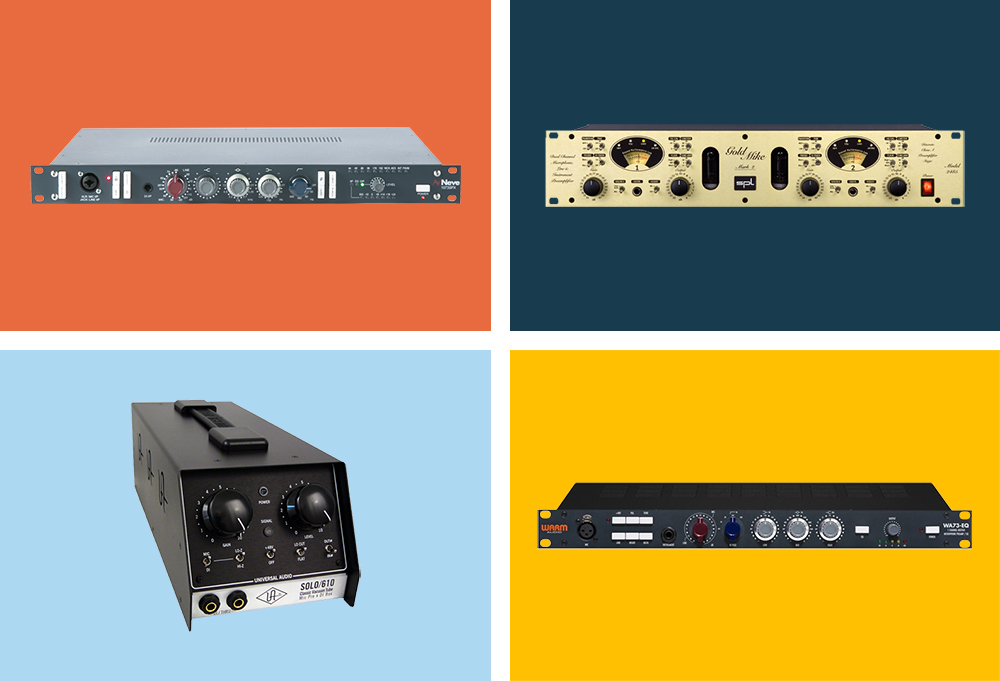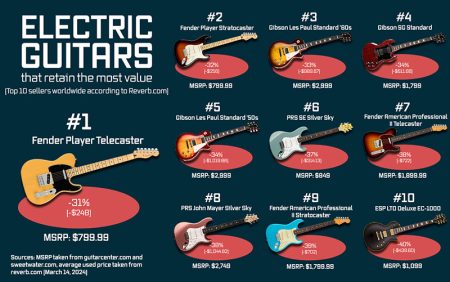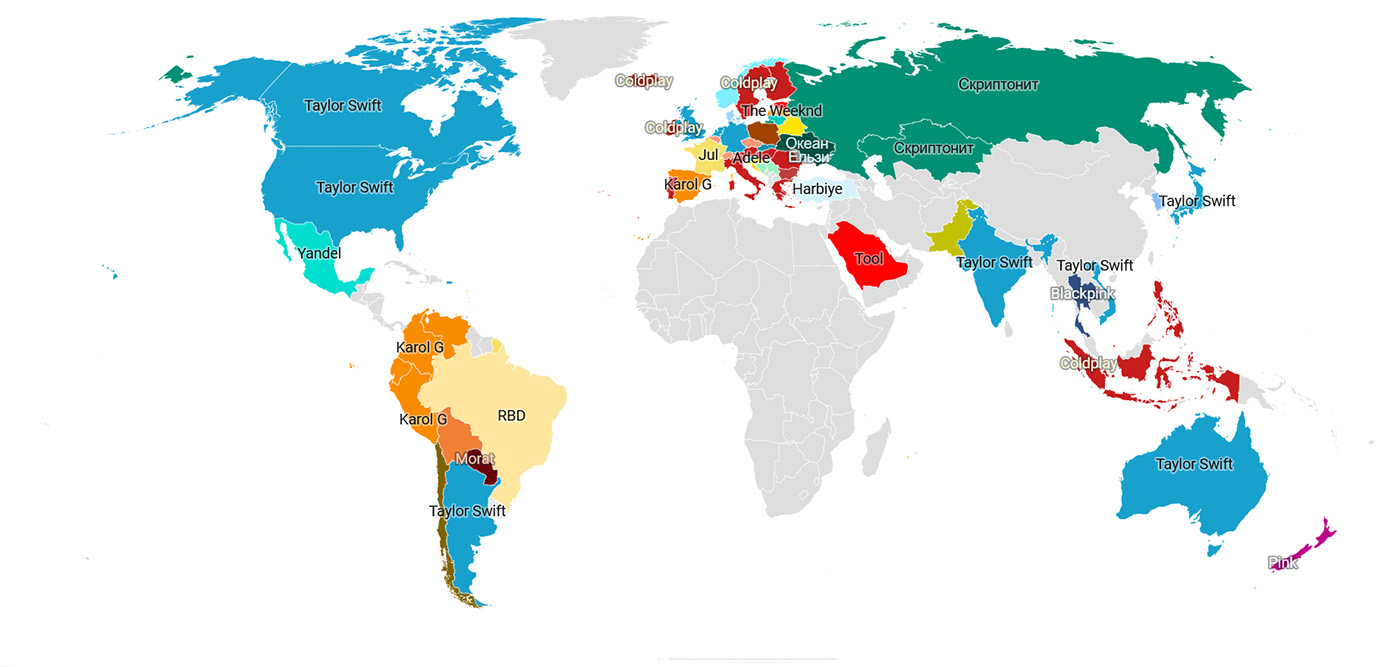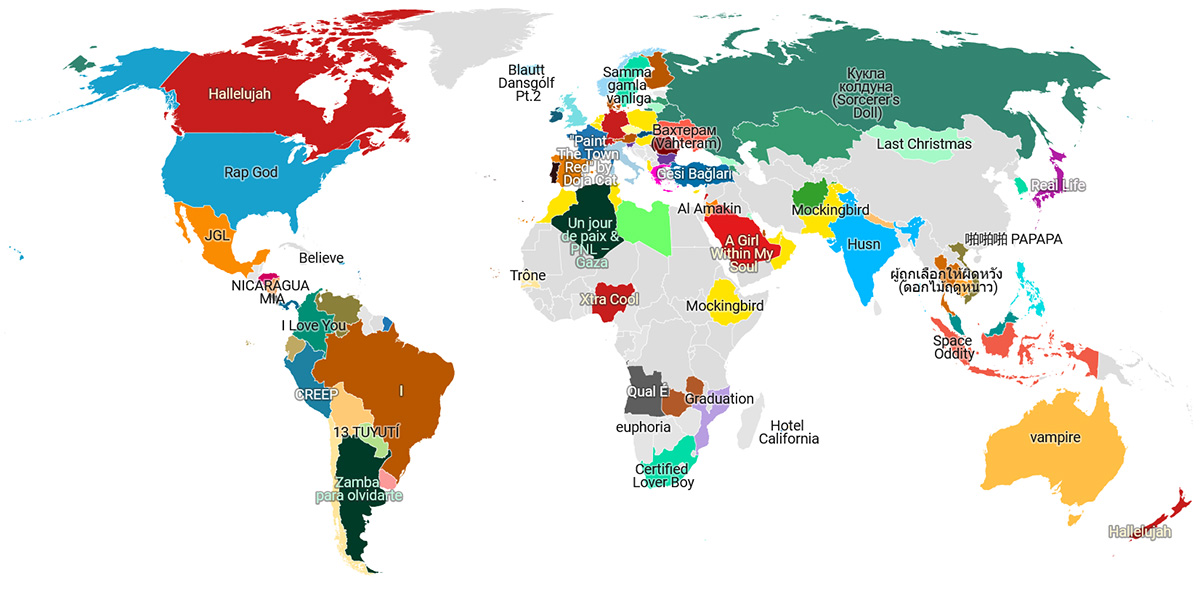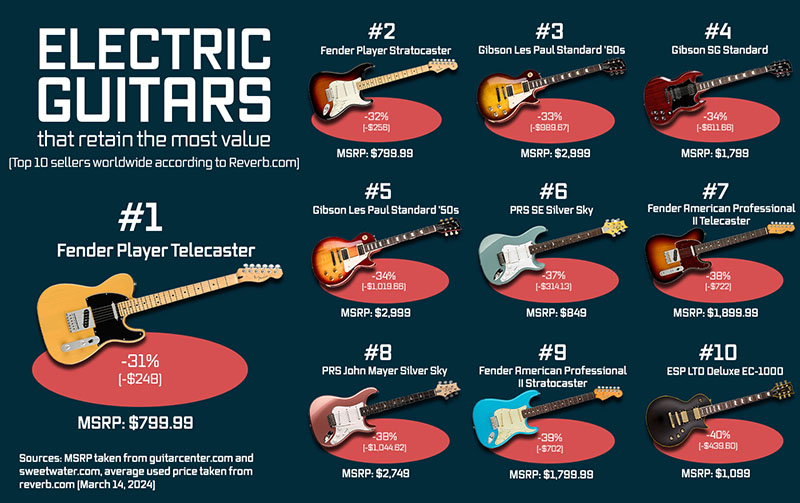What are preamps?
A preamplifier or "preamp" is an electronic device that amplifies weak audio signals from a microphone or other weak input source to a level that can be processed by a mixing console or other audio equipment.
In addition to raising the volume level, preamps are also used to color the audio signal. This means that depending on the vocalist or genre you are recording, one preamp may be more appropriate than another.
In recording studios, preamps play an important role in capturing and shaping the sound of microphones, instruments, and other sources before they are recorded. They can be stand-alone devices or built into other equipment such as mixing consoles or audio interfaces.
Do I even need a preamp?
The first thing you need to know is that all modern audio interfaces and mixers, whether analog or digital, already have preamps built in - though not necessarily the best ones. This means that if you own one of these devices, you already have a preamp.
So technically, you don't need an extra preamp. But as mentioned above, the preamps on audio interfaces are not the best. Especially for vocal recordings, an additional preamp is usually used because the vocals are the most important element of the whole mix.
So if you already have a good microphone (a $1000 preamp with a $50 mic makes no sense), have an acoustically optimized room for vocal recordings, and still have some money left over, investing in a good preamp is definitely worth it.
I would invest the money in acoustic elements first, if you don't already have an acoustically treated room for vocal recording (or at least a vocal booth). If the vocals sound bad because of the room, they won't get better with an expensive preamp - you'll hardly hear a difference.
Keep reading: ADAT - All about the interface in digital audio devices
Preamp types
There are basically two types of preamps, digital and analog.
- Digital preamps: Digital preamps use digital signal processing (DSP) to amplify the input signal. Compared to analog preamps, they offer greater versatility and control over the sound, but do not sound as good. They are primarily used in live mixing consoles.
- Analog preamps: Analog preamps use analog electronics to amplify the audio signal. They often produce a warm, natural sound and are favored by many recording studios and musicians because they can add a certain character or "flavor" to the audio signal. Analog preamps typically use tubes or transistors to amplify the audio signal.
In this article, I will only discuss analog preamps. Personally, I am not a big fan of digital preamps (for recording purposes, they are very practical in live situations) because they do not sound as lively as analog ones.
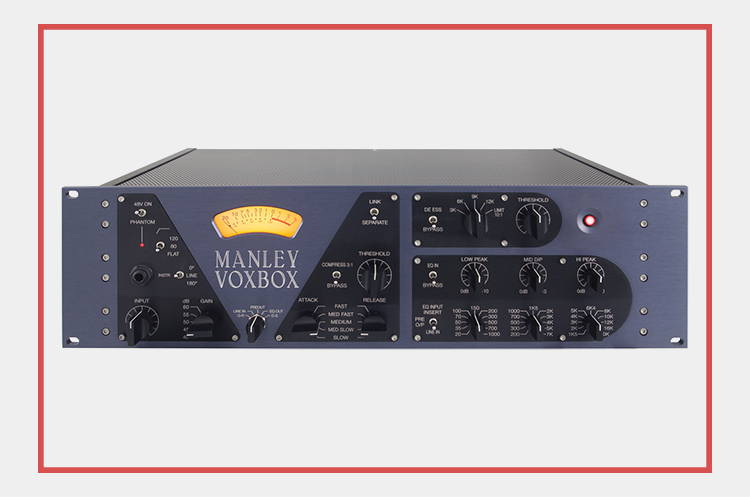
Tube preamps
Tube preamps use vacuum tubes to amplify the input signal. Tubes are known for their warm, harmonic sound, which many musicians and sound engineers love. Tube preamps are often favoured for their ability to add character or 'flavour' to the sound and are often used in recording studios because of this.
Transistor preamps
These types of preamps use transistors to amplify the signal. Unlike tube preamps, they usually do not color the audio signal, or at least much less, but are transparent and extremely low-noise. They are less sensitive and require less maintenance.
Which preamp is the best?
Neither is better than the other, they are just different and suited to different situations. Personally, I would use tube preamps for rock or heavy vocal recordings, where a certain saturation of the voice is very good. Or for gritty rap songs where the voice really needs to cut through.
I would use transistor preamps to record vocals in jazz or funk when I want clean, crystal clear vocals. Or in general, whenever I want the vocals to sound neutral. Because the saturation of the tubes may be good for some songs, but not for others. And you can't remove that saturation afterwards.
Other factors such as the microphone, the singer, or the room acoustics play a much bigger role than the preamp. If everything is in order, you can start thinking about different preamps.
The Best Preamps in 2023
Neve 1073 - An absolute classic
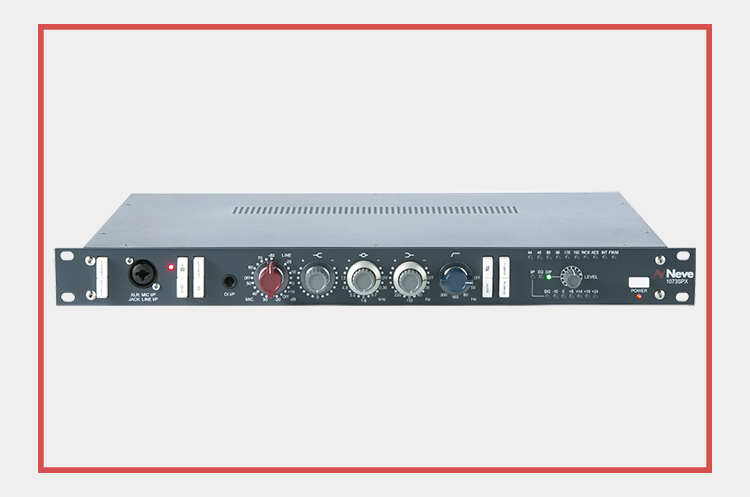
The Neve 1073 is a classic analog microphone preamp that has been used in many of the world's finest recording studios for decades. Developed in the 1970s by British engineer Rupert Neve, it was first introduced as part of the Neve 8078 mixing console. It is considered by many engineers to be the best preamp ever made.
It is particularly appreciated for its warm, musical sound and its ability to add a distinctive character to the audio signal. Smooth, creamy highs, powerful, defined mids and warm, rounded lows, and most of all, very musical. - this is how the Neve 1073 is often described.
The preamp also features a simple but effective 3-band EQ that can be used to fine-tune the sound of the audio signal. The 1073 has been used on countless recordings over the years, from classic rock albums to modern pop productions, and remains a very popular choice for many recording studios and musicians today.
This preamp is also known for its ability to handle high gain levels without noise or distortion, making it a good choice for sources that need to be boosted without sacrificing clarity or detail.
The sound is incredibly good, and paired with a Neumann U87, this is the classic vocal sound of the 80s. But it also sounds good on any other instrument, not just vocals. It's also a very good choice for miked guitar amps or bass amps.
What I really like about this preamp is that it has both an input and an output gain control. This allows you to saturate the sound very well or keep it clean:
- When I want a clear, transparent sound, I turn up the output control (level) to maximum and the input control (the famous red knob) just a little bit.
- If I want to saturate the sound and add some overdrive, I turn the Input knob all the way to the right until I get the distortion I want, and then balance it with the Output knob by turning it back.
So it's very versatile and can do anything from clean to distorted.
Price: 1.789€, Link
Universal Audio 610 - The classic tube preamp
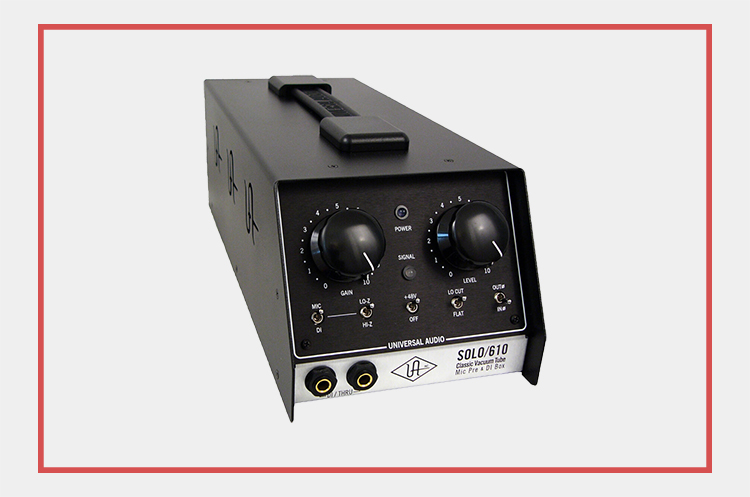
The Universal Audio 610 is a classic tube preamp that has been used by many famous engineers and producers to create some of the most iconic recordings in history.
Introduced by Universal Audio in the early 1960s, this preamplifier quickly became a standard in professional recording studios around the world. Its unique sound, versatility, and ability to color the audio signal made it a favorite of engineers who used it for recordings ranging from classical to rock and roll.
The 610 preamp is characterized by its tube technology. It gives it a warm, rich and harmonic sound. It can also be used additionally as DI box - which I highly recommend for bass guitars.
So it's not neutral, but the harmonic saturation that this preamp gives to the voice is incredibly beautiful. But if you're looking for a clean preamp, it's not the best choice.
Over the years, the 610 preamp has been used on countless recordings, and its sound has become synonymous with classic sound engineering. Among the most famous recordings made with the 610 are "Bridge Over Troubled Water" by Simon & Garfunkel, "Stairway to Heaven" by Led Zeppelin and "Dark Side of the Moon" by Pink Floyd.
Today, the 610 preamp is still highly sought after by engineers and producers looking for a classic analog sound for their recordings. It is especially popular for hip-hop vocals.
Universal Audio has reissued the 610 preamp as part of its Vintage Series, and it remains one of the company's most popular products.
Price: 1.099€, Link
SPL Goldmike 9844
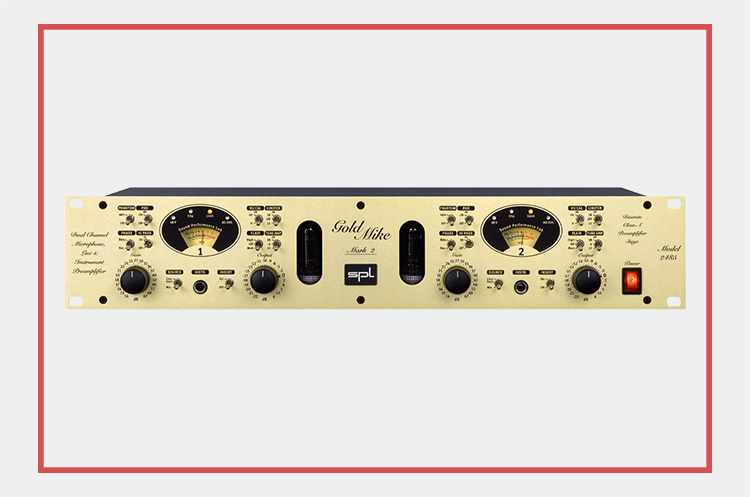
The SPL Goldmike 9844 is a high-end microphone preamplifier from SPL (Sound Performance Lab), a German manufacturer of professional audio equipment. It is known for its very transparent and precise sound.
The Goldmike 9844 is designed to work in recording studios, broadcast and even live sound reinforcement. It has two channels of microphone preamp, each with its own input stage, gain control and high-pass filter.
The Goldmike 9844 also features high headroom and low noise floor, making it ideal for use with microphones. The compact size and robust construction of the preamp make it ideal for vocal or acoustic guitar recordings.
This preamplifier is also very popular for voice-over and broadcast applications because of its low noise and very clean sound.
In addition, this preamp features a Flair switch, a proprietary SPL design that adds presence to the audio signal by boosting the very high frequencies.
I would recommend this preamp to anyone looking for a very clean microphone sound, whether for music or voice recording. It is also much cheaper than the previous models - it costs only 549€ and has 2 channels.
Price: 549€, Link
Warm Audio WA73-EQ
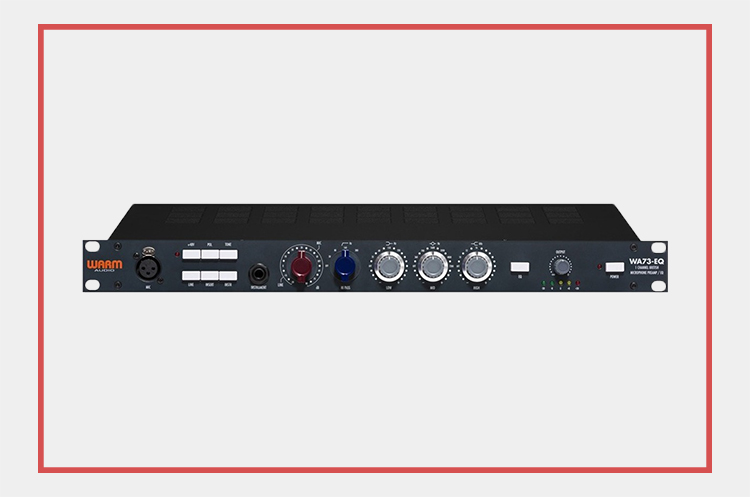
The WA73-EQ is a preamp based on the classic design of the Neve 1073, widely regarded as one of the best sounding preamps ever made. It is a clone of the 1073, designed to offer similar sound quality at a more affordable price.
Like the original 1073, the WA73-EQ is a discrete transistor-based Class A preamplifier known for its warm, clear, and very musical sound. It also has a three band EQ section that can be used to change the sound of the signal.
It is mainly used for recording bass and vocals, but is considered to be universally good for all types of audio sources.
The sound of the WA73-EQ is modeled after the classic Neve preamp. It sounds almost exactly like the original and has a similar warmth, clarity and harmony. It is only in a very good listening situation that you will hear a minimal difference in sound from the original - the Warm Audio sounds a little smokier.
It is very solidly built, rugged and durable. I can recommend it to anyone who loves the classic Neve sound but doesn't want to spend thousands of dollars on a preamp.
Price: 889€, Link
Golden Age Project Pre-73 MKIII

The Golden Age Project Pre-73 MKIII is a microphone preamp designed to recreate the sound and character of classic analog preamps from the 1960s and 1970s. The sound is again similar to Neve's classic 1073, although this clone is a bit further from the original than Warm Audio's.
The Pre-73 MKIII features a simple and straightforward design with a gain control, input and output level controls, and a high-pass filter. It uses high-quality, discrete components to ensure that the signal remains transparent and clear with minimal coloration.
It also has an insert point that allows you to add your own analog effects such as equalizers or compressors to further shape the sound. The preamp itself has no EQ like the original. But it also costs less than 300€.
Its classic sound and affordable price make it a popular choice for producers who want to record at a slightly higher quality than the standard preamp of their audio interface.
Price: 298€, Link
Frequently asked questions
Do I need Class A electronics?
Class-A is a type of electronic circuit commonly used in preamplifiers and other audio equipment. In a Class-A circuit, the output stage is always conducting, whether an input signal is present or not.
This results in a very linear frequency response and minimal distortion in the crossover. This, together with the low noise, makes them ideal for use in high quality audio equipment.
I recommend it to anyone who can afford it. Usually you only need one preamp these days, so I would probably invest more to have a good preamp that you can use for years and be happy with.
But it's not a must - preamps with Class B electronics are good and sound good enough for most situations - they just have a little more noise and less headroom.
Do expensive preamps sound better?
Yes, this is usually the case.
The sound quality of a preamplifier depends on many factors, such as the quality of the components used, the circuit design, and the specific sound the preamplifier is intended to produce.
More expensive preamps typically use higher quality components such as better capacitors, resistors, and operational amplifiers, resulting in a lower noise floor and more detail in the audio signal.
But just because a preamp is expensive doesn't mean it will sound better than a cheaper one. The sound quality of a preamp is very subjective, and what sounds good to one person may not sound good to another.
Furthermore, the sound quality of a preamp is only one aspect of the overall sound of a recording. The quality of other components in the signal chain, such as the microphone, analog-to-digital converter, and mixing console, can have a significant impact on the final sound.
Are the preamps in the audio interface not good enough?
They are perfectly adequate for most applications. I record my synthesizer or electric bass at home through the preamps of my Focusrite 2i2 and the sound is perfectly fine. I only use an additional preamp (Neve 1073) for vocals in my studio or for bass on more serious projects.





